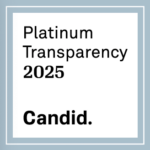Executive Summary
Agency officials and oncologists debate considerations where a data package overwhelms non-responders in favor of a tissue-agnostic indication.
Sponsors may be able to obtain a tissue-agnostic indication despite failing to show a response in one tumor type as the US Food and Drug Administration intends to remain flexible with its approval requirements.
The FDA seems willing to look past a lack of response in one histology, if success is seen in several others among enough patients. Tatiana Prowell, scientific lead for breast cancer in the FDA’s Office of Hematology and Oncology Products, as well as assistant professor of oncology in the Johns Hopkins Breast Cancer Program, said the agency many be willing to retain non-responding subgroups in the indication under certain circumstances.
“It gets to this issue of how big is the denominator. What’s your fraction look like,” Prowell said during a workshop on development of tissue-agnostic, biomarker-based indications sponsored by the FDA, Friends of Cancer Research and American Society of Clinical Oncology.
“I think if you have a histology where you don’t see responses with a limited number of patients in that subgroup, but you have a large number of histologies represented, it gives you greater confidence that maybe we don’t want to carve that out and have that as a limitation of use for example, or include language in the label suggesting that those patients don’t benefit, recognizing that that has real implications for access and reimbursement,” Prowell added.
The goal of the workshop, which solicited opinions from oncologists, regulators, patient advocates and others, was in part to gather input on the FDA’s approaches to reviewing applications for products seeking tissue-agnostic indications.
Indeed, some cancer treatments expected to be tissue-agnostic have run into problems with efficacy not equal across tumor location. Roche found during a trial that its BRAF inhibitor Zelboraf (vemurafenib) that tumor histology was important in determining the response in BRAF V600-mutated cancers. (Also see “Tissue-Agnostic Approach To Cancer Drug Development Takes A Hit” – Pink Sheet, 14 Sep, 2015.) A study of Puma Biotechnology Inc.’s pan-HER inhibitor neratinib also found efficacy only in some kinds of cancer with HER2-activating mutations. (Also see “Puma’s Neratinib SUMMIT Study Shows Potential & Pitfalls Of Precision Medicine” – Pink Sheet, 2 Apr, 2017.)
We’ll Never Understand All Non-Responders, Oncologist Says
Agency officials said throughout the workshop that they will consider the totality of evidence when determining whether to grant a tissue-agnostic indication. But the question of how or whether to approve a tissue-agnostic indication when some patients subgroups did not respond seemed vexing.
Theodore Laetsch, a pediatric oncologist at the University of Texas Southwestern Medical Center, said when there is enough data suggesting a tissue-agnostic response, the agency should need more than a few non-responders to dispute it. He also reminded the room that determining the cause of the non-response will be difficult, if not impossible.
“It is important from a mechanistic standpoint to define why patients don’t respond, but I don’t believe there’s ever been a drug that we’ve been able to define why every single patient that didn’t respond didn’t respond,” Laetsch said. “That should be our goal as academicians to understand that better and to better enable patient selection, but I do think that’s also not going to be really possible for every patient.”
Vivek Subbiah, clinical medical director in the MD Anderson Cancer Center’s Center for Targeted Therapy, said pre-clinical or early clinical work may help avoid non-responder problems.
“In the early studies that we see resistant tumors, we can exclude those tumors,” Subbiah said.
The FDA also can use postmarket experience to police the validity of tissue-agnostic indications. Agency officials said during the workshop that real-world evidence could inform indication carve-outs or move products from tissue-specific to tissue-agnostic indications. (See sidebar.)
The agency has approved tissue-agnostic labeling for two products so far, which allow for the product to be used for a specific form of cancer no matter where it appears in the body. The first, Merck & Co. Inc.’s Keytruda (pembrolizumab), gained the distinction as a supplemental indication in 2017. (Also see “Biomarker-Led Claim Is Small Step For Merck’s Keytruda, Giant Leap For Cancer Indications” – Pink Sheet, 23 May, 2017.)
Loxo Oncology Inc. and Bayer AG gained the second tissue-agnostic approval – the first of a novel product prospectively developed for that purpose – for Vitrakvi (larotrectinib) in 2018. (Also see “Vitrakvi, Daurismo Approvals Put US FDA On Brink Of Another Record ” – Pink Sheet, 27 Nov, 2018.)
Is Four To Five Tumor Types Enough For A Tissue-Agnostic Indication?
Stakeholders also tried to narrow the FDA’s broad case-by-case approach to the evidence necessary to obtain a tissue-agnostic indication. The debate seemed to narrow the total, but there still seemed to be concerns about the work that may be required.
Howard Burris, an oncologist at Sarah Cannon, the cancer institute of HCA Healthcare, said defining a number is difficult, but settled on four tumor types as symbolic of a potential tissue-agnostic response.
“It is hard to pin down to a number, but it feels like if you’re not north of four or more unique and very different tumor types, there’s some number there in the four, five range where it feels like it probably ought to be studied,” Burris said. “And there needs to be some diversity in terms of those histologies not even being similar.”
Subbiah said there likely is no answer because early studies are necessary to determine the tumor types that could be studied for a tissue-agnostic indication.
Joon Rhee, global clinical lead for Lynparza (olaparib) combinations and new opportunities at AstraZeneca PLC, also said the FDA must be careful in dictating the patient groups to prioritize for a tissue-agnostic indication study.
“I think the reality is it’s very, very difficult to find these patients in rare populations,” Rhee said. “The reality is we need to do what’s feasible.”
The FDA released draft guidance on molecularly-targeted drugs seeking indications across multiple patient subsets in 2017 that attempted to streamline the development process. The agency wrote that broad labels could be allowed, but the agency indicated that labels may be narrowed or additional studies may be mandated if emerging data suggests a lack of efficacy in some subgroups. (Also see “US FDA Outlines Streamlined Development Path For Targeted Therapies” – Pink Sheet, 16 Dec, 2017.)
https://pink.pharmaintelligence.informa.com/PS125241/US-FDA-Seeks-Ways-…

